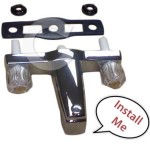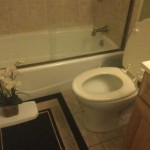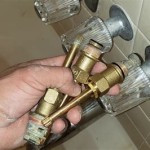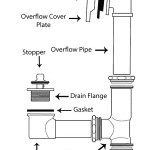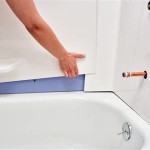How Do Portable Bathtubs Drain?
Portable bathtubs, designed for flexibility and convenience, present a practical bathing solution in various settings. These bathtubs circumvent the limitations of fixed plumbing, allowing individuals to enjoy a relaxing soak almost anywhere. However, a crucial aspect of portable bathtub design and usability centers around the drainage mechanism. Understanding how portable bathtubs drain is essential for effective use and preventing potential problems such as water damage or inconvenient spills.
Traditional bathtubs rely on a direct connection to a permanent plumbing system. This system includes a drainpipe, a trap (typically a P-trap), and a vent. The drainpipe carries the wastewater away, the trap prevents sewer gases from entering the bathroom, and the vent allows air to enter the system, ensuring proper drainage flow. Portable bathtubs, lacking a permanent plumbing connection, necessitate alternative drainage solutions to manage the wastewater efficiently and safely.
The draining process of a portable bathtub involves several key components and mechanisms, each contributing to the effective removal of water after usage. The type of drainage system implemented varies depending on the specific design and intended application of the portable bathtub. These systems can range from simple gravity-fed hoses to more sophisticated pumping systems.
Gravity-Fed Drainage Systems
One of the most common and straightforward methods for draining a portable bathtub is through a gravity-fed system. This system relies on the natural force of gravity to pull the water out of the bathtub and into a designated drain. The portable bathtub is typically equipped with a drain plug or valve located at its lowest point. When the user wants to drain the tub, they open this valve or remove the plug, allowing the water to flow out.
Attached to the drain outlet is a flexible hose. This hose guides the wastewater to a suitable drainage point. The effectiveness of gravity-fed drainage depends on several factors, most importantly the elevation difference between the bathtub and the discharge point. For optimal performance, the discharge point must be lower than the base of the bathtub. The greater the difference in elevation, the faster the water will drain. It is also important to ensure that the hose is free of kinks or obstructions that could impede the water flow.
The length and diameter of the drainage hose also influence drainage speed. A longer hose will generally result in slower drainage due to increased friction, while a narrower hose will restrict the flow of water. Therefore, manufacturers often recommend using a hose of a specific length and diameter to ensure adequate drainage performance. The material of the hose is also relevant. Hoses made from flexible yet durable materials are preferred to prevent cracking or leakage. They also must be able to withstand the temperature of the water.
The destination of the drainage hose is another crucial consideration. Common drainage points include floor drains, sinks, or toilets. When draining into a sink or toilet, it's important to avoid overflowing these fixtures. The flow rate from the bathtub should be monitored, especially with larger portable bathtubs. In situations where a direct drain is not readily available, the hose can be directed to a large container for temporary storage, which is then emptied manually.
Portable bathtubs utilizing gravity-fed drainage systems are generally simple to set up and use. They require no external power source and are relatively inexpensive. However, they are dependent on the availability of a suitable drainage point at a lower elevation, which might limit their usability in certain environments. Furthermore, smaller tubs may not have suitable connections to prevent overflow when used near a sink or toilet.
Pump-Assisted Drainage Systems
In situations where gravity-fed drainage is not feasible or desirable, portable bathtubs may employ a pump-assisted drainage system. This system utilizes a small, submersible pump to actively pump the wastewater out of the bathtub and into a designated drain. These pumps are typically electric and require a power source to operate. Their use is particularly advantageous when draining uphill or over a longer distance.
The pump is usually located within the bathtub itself or connected externally near the drain outlet. When activated, the pump draws water from the bathtub through a strainer, which prevents debris from clogging the pump mechanism. The water is then forced through a flexible hose and discharged to the designated drainage point. Pump-assisted systems offer greater flexibility in terms of drainage location, as the water can be pumped to a higher elevation or over longer distances than is possible with gravity-fed systems.
The capacity of the pump is a critical factor determining the drainage speed. A pump with a higher flow rate will drain the bathtub more quickly than a pump with a lower flow rate. The pump's specifications should be carefully considered based on the size and capacity of the portable bathtub. It's also important to verify that the pump is compatible with the type of water being used, as certain chemicals or additives may damage the pump components.
Portable bathtubs using pump-assisted drainage systems often include safety features such as automatic shut-off mechanisms. These mechanisms prevent the pump from running dry once the bathtub is empty, which can damage the pump. Some pumps also have built-in overcurrent protection to prevent electrical overload. Additionally, regular maintenance, such as cleaning the strainer and checking for any obstructions, is necessary to ensure the pump operates efficiently and reliably.
Pump-assisted drainage systems allow for greater flexibility and convenience, but they also introduce additional complexity and cost. These systems require a power source, and the pump itself adds to the overall weight and bulk of the portable bathtub. The potential for pump failure is a further consideration. However, for users who need to drain their portable bathtub in challenging environments, a pump-assisted system can be a valuable solution.
Direct Connection Drains
While less common in truly portable bathtubs meant for use in very unconventional locations, some designs offer direct connection capabilities to existing plumbing. This type of drainage system aims for a more permanent or semi-permanent setup while still retaining some degree of portability. It bridges the gap between fully portable and fixed bathtubs.
In this configuration, the portable bathtub is designed with a standard drain fitting that can be directly connected to a standard bathtub drain pipe. This often involves a flexible connector hose with appropriate adapters to match the bathtub's drain outlet to the existing plumbing. This connection can be either temporary, using a rubber compression fitting, or more permanent, using threaded connections.
This method offers the advantage of fast and reliable drainage, similar to that of a traditional bathtub. However, it requires that the portable bathtub be located near an existing drain, limiting its placement options. Furthermore, the connection must be carefully sealed to prevent leaks. Depending on local plumbing codes, a vent may also be required to ensure proper drainage flow. This type of drainage system is typically used in situations where the portable bathtub will be used in the same location for an extended period of time.
It's also crucial that the drain connections meet relevant safety standards to avoid water contamination and ensure proper waste disposal. Although resembling permanent fixtures, these connections should be checked regularly for deterioration or leaks. For this type of drain, the portability of the tub is significantly lessened, as it is reliant on a specific location.
Overall, this type of drainage system is suitable for situations where a semi-permanent bathing solution is needed and near existing plumbing. This allows for easy and effective water disposal without the inconvenience of emptying containers or relying on gravity alone. It is important to consider any required plumbing modifications and potential code compliance issues before implementing this method.
The method of draining a portable bathtub is a key consideration when selecting a suitable model. Each of the above methods offers distinct advantages and disadvantages, and the optimal choice will depend on the intended use, the available resources, and the user's specific requirements. Understanding the principles behind each drainage system ensures the safe and efficient removal of wastewater, enhancing the overall usability and convenience of the portable bathtub.

Tub Drain Portable Bathtub Shower Pipe For Kitchen Bathroom Lavatory

Portable Bath Tub With Drainage Pipe

Simple Project 56 In X 24 Collapsible Soaking Bathtub With Right Drain Blue Portable Shower Bath For S Al Pbt 1 The Home Depot

How To Drain An Inflatable Hot Tub

Foldable Independent Bathtub With Two Drainage Holes Portable Neoprene Pvc Material Round Contemporary Design For S Kids Space Saving Bathroom Soak Durable Construction

Portable Bathtub Freestanding Tub Drain Kit Standing Drains For Plug Bathroom

Foldable Collapsible Bathtub Soaking Barrel Portable Massage Spa Bath Tub 135cm

Folding Bathtub United Kingdom

Buy Foldable 135cm Large Massage Bathtub Portable Bath Tub With Drain For Mydeal

Bathtubs Tiktok

